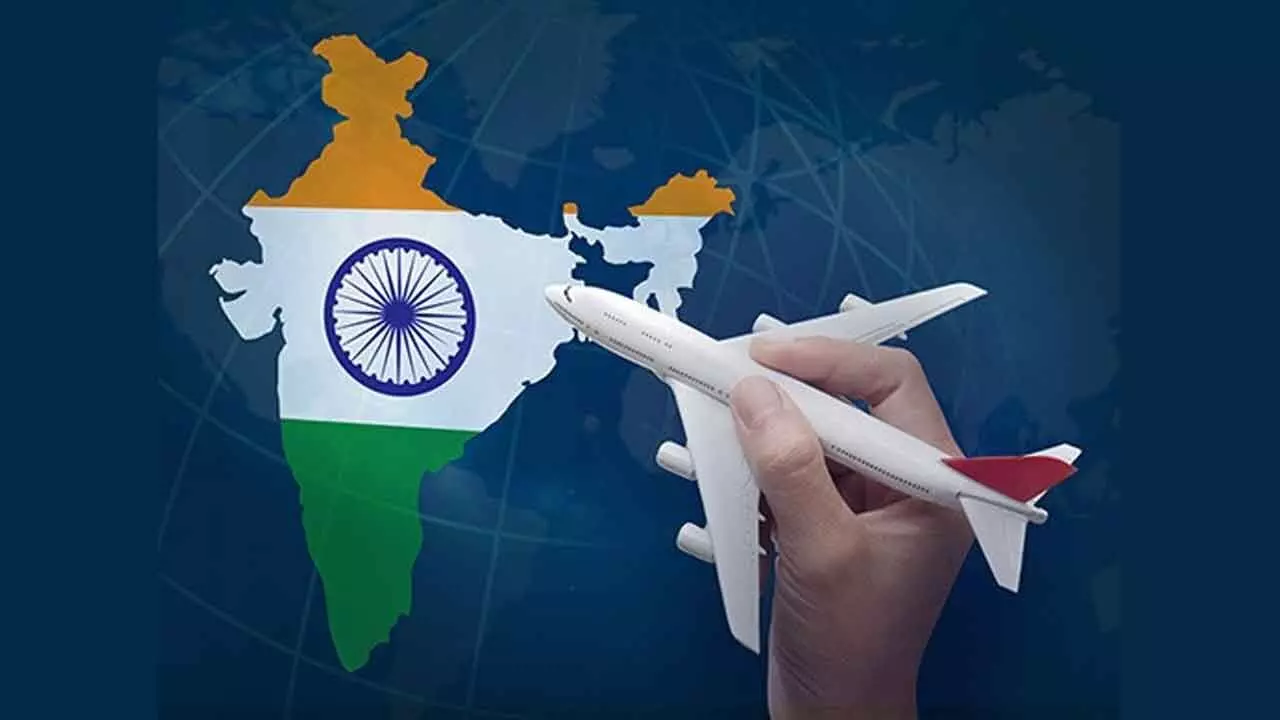Fast-tracking India’s Aviation Growth Is Changing The Economic Landscape
Approximately, $24 billion will be needed to build new airports and expand the existing ones
Fast-tracking India’s Aviation Growth Is Changing The Economic Landscape

S&P Global Ratings notes that favourable borrowing conditions, buoyed by increasing passenger numbers and policies easing foreign ownership, are conducive to this ambitious expansion.
India’s aviation boom is set to transform the country’s economic landscape, making air travel more accessible and convenient for citizens. As the government continues to invest in airport infrastructure, regional connectivity will improve, driving economic growth and development.
To finance new aircraft and boost its airport capacity, the Indian aviation sector will require over $170 billion by 2030, S&P Global Ratings has pointed out.
In a report titled ‘India Aviation: Funding Needs Will Soar’, the credit ratings agency noted that Indian carriers would need Rs. 12 lakh crore ($150 billion) to finance outstanding orders for 1,700 aircraft from Boeing and Airbus. This investment would triple the fleet size of the country’s five largest carriers.
“Air India Ltd and InterGlobe Aviation Ltd (Indigo) together account for more than 80 per cent of the orders,” it said.
Additionally, Rs. two lakh crore ($24 billion) will be needed to build new airports and expand existing ones. Centre has set a target of having 220 airports by 2030 and 300 by 2047. As of July this year, there are 145 airports in the country.
Mark Martin, founder and CEO of Martin Consulting, emphasizes the need for airport planning to be driven by passenger growth forecasts rather than political motivations. “Regional airports are crucial for economic growth, but planning must be demand-driven to ensure sustainability,” Martin said.
S&P Global Ratings emphasised that India’s travel growth potential is driven largely by its rising middle class. “India has a bigger population than China but less than one-third of its air traffic capacity. Domestic passenger traffic may surge to 300 million annual passengers by 2030, up from 153 million in 2023, while international travellers could increase to 160 million annually from 65 million over the same period,” the report said.
To meet the rising demand, airlines and airports are expected to rely heavily on debt financing. “Much of that spending will be debt-financed,” said S&P Global Ratings credit analyst Isabel Goh. However, improving revenues and “relatively attractive onshore rates and multiple financing options” are likely to support these investments.
“And in our view, the timing is right to support higher borrowing,” the report added.
“Rising passenger air traffic, relatively cheaper domestic financing rates and workable government policies on foreign ownership should boost funding prospects for the sector,” said S&P Global Ratings credit analyst Cheng Jia Ong.
Despite these growth prospects, the agency also pointed out risks that need to be monitored in the sector.
“While some airlines have sufficient liquidity or financial support from strong parent companies, several smaller carriers still struggle financially, even with some improvements relative to the lockdown years. Airports, on the other hand, continue to face untimely tariff resets that could create higher cash flow volatility,” it added.
According to the agency, “regulatory, financial, and execution risks” remain key watch points for the sector.
S&P Global Ratings notes that favourable borrowing conditions, buoyed by increasing passenger numbers and policies easing foreign ownership, are conducive to this ambitious expansion. By tapping into aircraft lessors and local banks, India aims to mitigate financial strains inherent in such large-scale investments.
According to FICCI, the Indian civil aviation sector is one of the fastest growing in the world. It aims to become the largest by 2030. India is building new airports and expanding the existing ones to meet the growing demand via public private partnership (PPP) mode. Factors like rising low-cost carriers (LCCs), development of modern airports, 100 percent FDI in scheduled airlines, advanced IT interventions and growing emphasis on regional connectivity are driving an upward trend in the Indian civil aviation industry.
Emphasis has been laid on improving connectivity to priority areas like the North East, Jammu & Kashmir, Uttarakhand, Himachal Pradesh, Andaman & Nicobar Islands and Lakshadweep by introducing more operational flexibility and promoting helicopter operations.
India’s airport infrastructure is undergoing modernisation with the installation of state-of-the-art facilities, expansion of existing airports and construction of new greenfield airports. With policy support and focus on Make in India, the government is also determined to develop the Maintenance, Repair and Overhaul (MRO) industry by giving tax exemptions, faster clearances and land provision.
Development of tourism, trade and travel has contributed to the increased passenger traffic in India.

